Houcine Chougrani
Efficient Transmission Scheme for LEO Satellite-Based NB-IoT: A Data-Driven Perspective
Jun 20, 2024Abstract:This study analyses the medium access control (MAC) layer aspects of a low-Earth-orbit (LEO) satellite-based Internet of Things (IoT) network. A transmission scheme based on change detection is proposed to accommodate more users within the network and improve energy efficiency. Machine learning (ML) algorithms are also proposed to reduce the payload size by leveraging the correlation among the sensed parameters. Real-world data from an IoT testbed deployed for a smart city application is utilised to analyse the performance regarding collision probability, effective data received and average battery lifetime. The findings reveal that the traffic pattern, post-implementation of the proposed scheme, differs from the commonly assumed Poisson traffic, thus proving the effectiveness of having IoT data from actual deployment. It is demonstrated that the transmission scheme facilitates accommodating more devices while targeting a specific collision probability. Considering the link budget for a direct access NB-IoT scenario, more data is effectively offloaded to the server within the limited visibility of LEO satellites. The average battery lifetimes are also demonstrated to increase by many folds by using the proposed access schemes and ML algorithms.
Multi-layer Space Information Networks: Access Design and Softwarization
Oct 15, 2021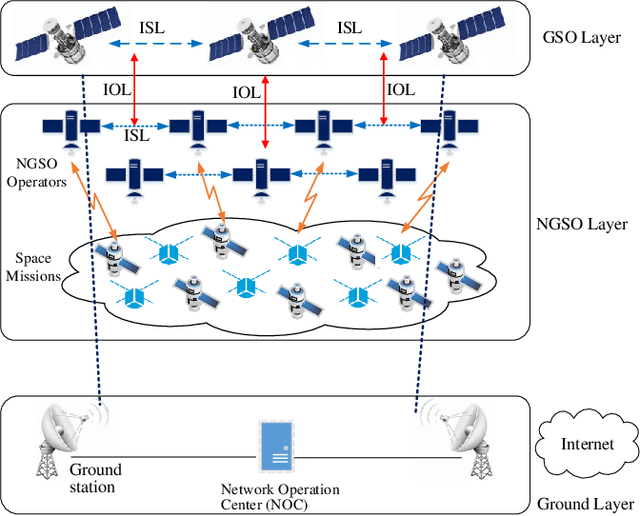
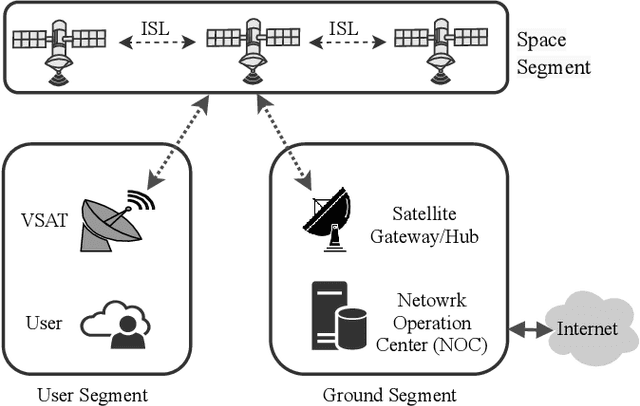
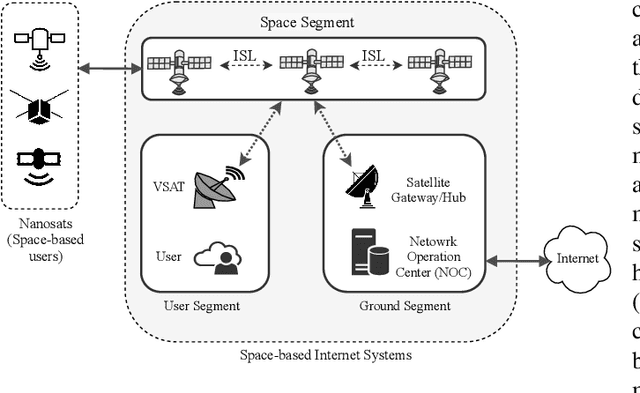
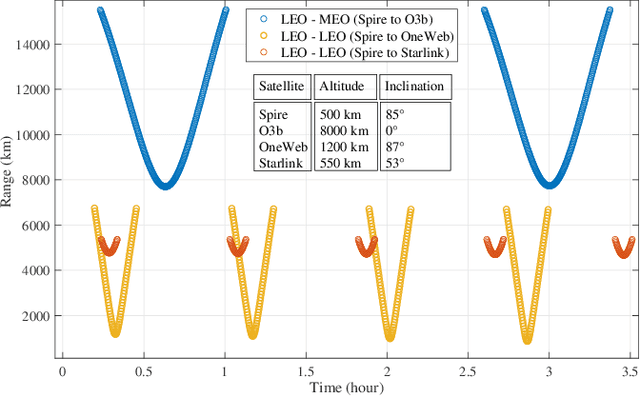
Abstract:In this paper, we propose an approach for constructing a multi-layer multi-orbit space information network (SIN) to provide high-speed continuous broadband connectivity for space missions (nanosatellite terminals) from the emerging space-based Internet providers. This notion has been motivated by the rapid developments in satellite technologies in terms of satellite miniaturization and reusable rocket launch, as well as the increased number of nanosatellite constellations in lower orbits for space downstream applications, such as earth observation, remote sensing, and Internet of Things (IoT) data collection. Specifically, space-based Internet providers, such as Starlink, OneWeb, and SES O3b, can be utilized for broadband connectivity directly to/from the nanosatellites, which allows a larger degree of connectivity in space network topologies. Besides, this kind of establishment is more economically efficient and eliminates the need for an excessive number of ground stations while achieving real-time and reliable space communications. This objective necessitates developing suitable radio access schemes and efficient scalable space backhauling using inter-satellite links (ISLs) and inter-orbit links (IOLs). Particularly, service-oriented radio access methods in addition to software-defined networking (SDN)-based architecture employing optimal routing mechanisms over multiple ISLs and IOLs are the most essential enablers for this novel concept. Thus, developing this symbiotic interaction between versatile satellite nodes across different orbits will lead to a breakthrough in the way that future downstream space missions and satellite networks are designed and operated.
A Survey on Non-Geostationary Satellite Systems: The Communication Perspective
Jul 12, 2021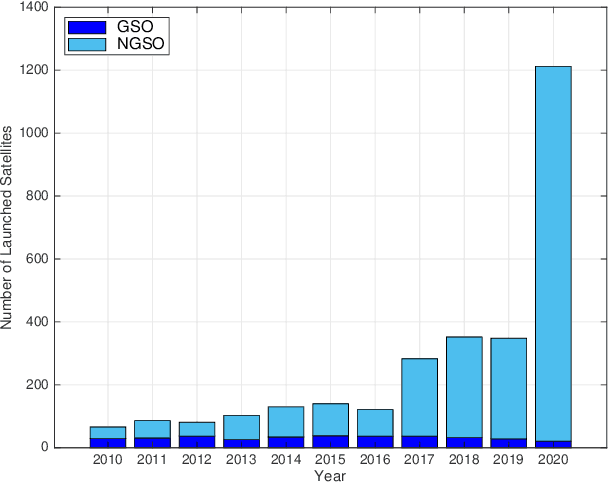
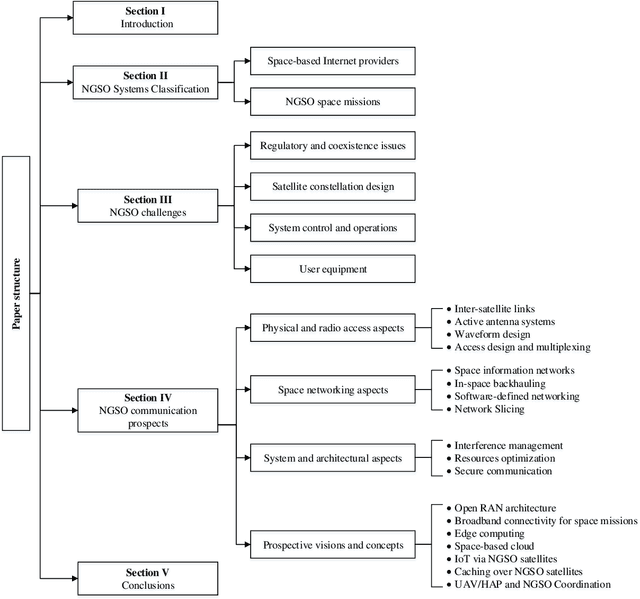
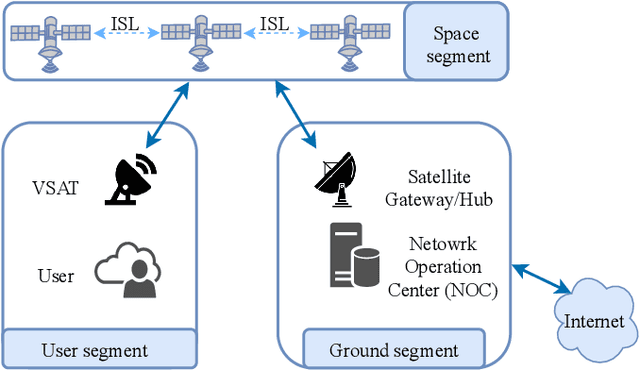
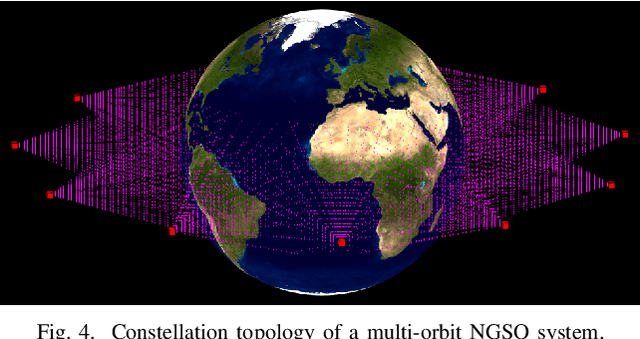
Abstract:Non-geostationary (NGSO) satellites are envisioned to support various new communication applications from countless industries. NGSO systems are known for a number of key features such as lower propagation delay, smaller size, and lower signal losses in comparison to the conventional geostationary (GSO) satellites, which will enable latency-critical applications to be provided through satellites. NGSO promises a dramatic boost in communication speed and energy efficiency, and thus, tackling the main inhibiting factors of commercializing GSO satellites for broader utilizations. However, there are still many NGSO deployment challenges to be addressed to ensure seamless integration not only with GSO systems but also with terrestrial networks. These unprecedented challenges are discussed in this paper, including coexistence with GSO systems in terms of spectrum access and regulatory issues, satellite constellation and architecture designs, resource management problems, and user equipment requirements. Beyond this, the promised improvements of NGSO systems have motivated this survey to provide the state-of-the-art NGSO research focusing on the communication prospects, including physical layer and radio access technologies along with the networking aspects and the overall system features and architectures. We also outline a set of innovative research directions and new opportunities for future NGSO research.
NB-IoT Random Access for Non-Terrestrial Networks
Jan 20, 2021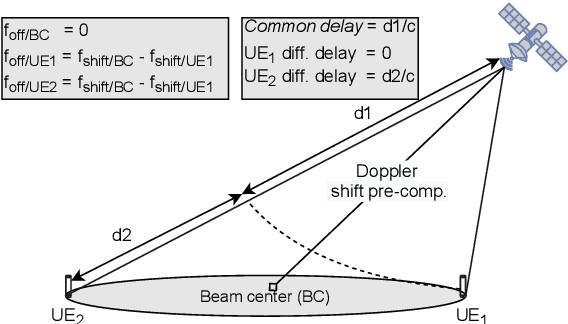
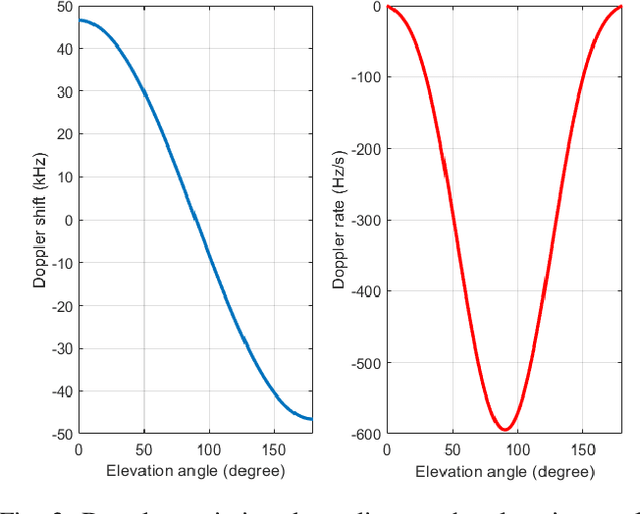

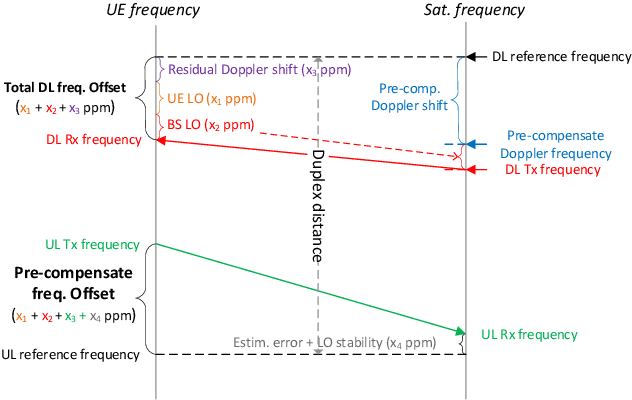
Abstract:The satellite component is recognized as a promising solution to complement and extend the coverage of future Internet of things (IoT) terrestrial networks (TNs). In this context, a study item to integrate satellites into narrowband IoT (NB-IoT) systems has been approved within the 3rd Generation Partnership Project (3GPP) standardization body. However, as NB-IoT systems were initially conceived for TNs, their basic design principles and operation might require some key modifications when incorporating the satellite component. These changes in NB-IoT systems, therefore, need to be carefully implemented in order to guarantee a seamless integration of both TN and non-terrestrial network (NTN) for a global coverage. This paper addresses this adaptation for the random access (RA) step in NB-IoT systems, which is in fact the most challenging aspect in the NTN context, for it deals with multi-user time-frequency synchronization and timing advance for data scheduling. In particular, we propose an RA technique which is robust to typical satellite channel impairments, including long delays, significant Doppler effects, and wide beams, without requiring any modification to the current NBIoT RA waveform. Performance evaluations demonstrate the proposal's capability of addressing different NTN configurations recently defined by 3GPP for the 5G new radio system.
 Add to Chrome
Add to Chrome Add to Firefox
Add to Firefox Add to Edge
Add to Edge